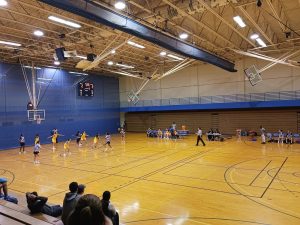Debts vs. Students; Will Our Miseries Ever End?
April 27, 2012
Will this nation ever produce an affordable education to us students? US student loan debt has surpassed $1 trillion this year, exceeding both credit card and auto loan debts. Business Week says that, “The average student loan debt is about $25,000, which is up 25 percent in the last 10 years.” Roughly 80 percent of student loans are government-guaranteed, with 30 percent of these government-backed loans past due 30 days or more.
This increase in student debts is a major factor in spurring along the recession. The increase in technological innovations in today’s major organizations has reduced the need for manual labor and calls for more expertise. This is directly leading to an underemployment problem and forcing people to go back to school to learn new skills. These second-chance students end up taking loans, banking on employment when they graduate, but in this competitive job market employment is not guaranteed and students are left with heavy debts.
So why aren’t students getting jobs after graduation? Business Week suggests that academic advisors should, “give students a three-column list that shows the jobs they can get with a two-year technical degree, jobs they can get with a bachelor’s degree only, like teacher, accountant, and engineer; and jobs that require a master’s degree or higher, such as psychologist and sociologist. Giving students the tools and incentive to pick careers that would give them immediate employment is a major step toward preventing a real student loan debt crisis.
Another solution for eliminating the burden of student loans include changing the payment plans. The government offers federal-loan holders a number of different repayment plans, including payment on a graduated scale, or calculating your monthly payment based on your annual income. Under the income-based repayment program, monthly loan bills are limited to no more than 15% of a borrower’s discretionary income. Any debt that isn’t paid off after 25 years is forgiven. The program is to be improved in 2014, limiting payments to no more than 10% of discretionary income and forgiving debt after 20 years.
Another idea, suggested by the Wall Street Journal (WSJ), is to get a teaching job or work for a non-profit organization. State, federal and private programs may forgive student loans for nurses, veterinarians, physical therapists and lawyers who take certain jobs. Under the Public Service Loan Forgiveness program, employees working for nonprofits or in other public-service jobs can have the balance of their loans forgiven if they make their payments for 10 years. Under the Stafford Teacher Loan Forgiveness Program, teachers of low-income students could have up to $5,000 in loans forgiven after five years. Special education and high school math and science teachers can have up to $17,500 canceled. In fiscal 2011, some 28,700 people had almost $250 million in loans forgiven.
Robert Applebaum’s ‘Forgive Student Loan Debt’ campaign aims for the House and the Obama Administration to support H. Res 365, introduced by Rep. Hansen Clarke (D-MI), seeking student loan forgiveness as a means of economic stimulus. “Forgiving the student loan debt of all Americans will have an immediate stimulative effect on our economy. With the stroke of the President’s pen, millions of Americans would suddenly have hundreds, or in some cases, thousands of extra dollars in their pockets each and every month with which to spend on ailing sectors of the economy.” says the campaign’s official website, SignOn.org. The petition now has nearly 670,000 signatures.On the site, former students tell stories of unemployment, worthless majors, low-paying jobs, six-figure debt, insurmountable interest, forbearance, and default. From a human standpoint, it’s easy to see why forgiving student debt holds some appeal but many have questions about the enormous and economically unfeasible cost and the purported benefits and fairness of a one-time student loan bailout. When will the miseries of students end?






